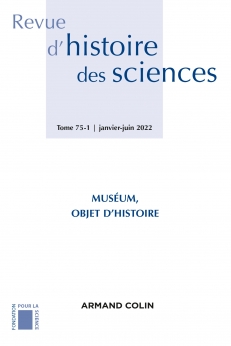
REVUE D'HISTOIRE DES SCIENCES (1/2022)
Pour acheter ce numéro, contactez-nous
Recevez les numéros de l'année en cours et accédez à l'intégralité des articles en ligne.
Bien que leur présence au sein du Jardin du roi à Paris soit indéniable, les jardiniers sont longtemps passés inaperçus dans l’historiographie de l’institution et celle de l’histoire des sciences. Et pourtant, non seulement ils ont contribué à entretenir et à conserver les plantes et les graines, principaux objets d’étude des savants botanistes mais ils ont aussi apporté leur concours à la réalisation de projets scientifiques portés ou accompagnés par l’institution. L’expédition Lapérouse offre un bel exemple du rôle joué par deux jardiniers dans la réalisation des desseins scientifiques et politiques de cette dernière campagne de l’Ancien Régime ; il s’agit d’André Thouin (1747-1824), jardinier en chef du Jardin du roi, et de Jean-Nicolas Collignon (1762 – v. 1788), premier jardinier voyageur du roi.
Although their presence in the Jardin du Roi in Paris is undeniable, the gardeners have long gone unnoticed in both the history of the institution and the history of science more generally. And yet, not only did they contribute to the maintenance and conservation of plants and seeds, the main objects of study for botanical scientists, but they also contributed to the realisation of scientific projects carried out or supported by the institution. The Lapérouse expedition is a good example for exploring the role played by two gardeners in the realisation of the scientific and political aims of what was to be the last such project under the Ancien Régime: André Thouin (1747–1824), the head gardener of the Jardin du Roi, and Jean Nicolas Collignon (1762–c. 1788), the King’s first travelling gardener.